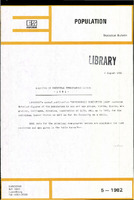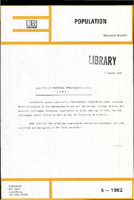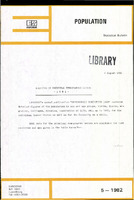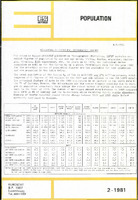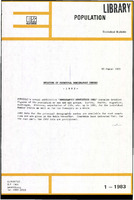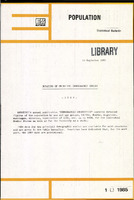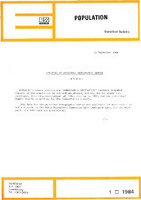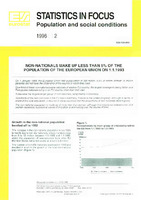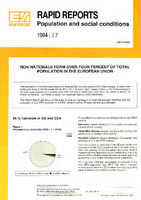Αναζήτηση
Αποτελέσματα 1-10 από 48
Statistical bulletin. Population. Up-dating of principal demographic series.
(Eurostat, 1981)
1 • [3!L) POPULATION eurostat I ________ ~.._____, 4.8.1981 UP-DATING OF PRINCIPAL DEMOGRAPHIC SERIES The recently issued EUROSTAT publication "Demographic Statistics, 1979" contains de-tailed figures of population by sex ...
Statistical bulletin. Population. Updating of Principal Demographic Series 1981.
(Eurostat, 1982)
Eurostat's annual publication "DEMOGRAPHIC STATISTICS 1980" contains detailed figures of the population by sex and age groups, births, deaths, mi-gration, marriages, divorces, expectation of life, etc. up to 1980, for the ...
Statistical bulletin. Population. Updating of Principal Demographic Series 1982.
(Eurostat, 1983)
Eurosta's annual publication "DEMOG HIC STATISTICS 1981" contains detailed figures of the population by sex and a e groups, births, deaths, migration, marriages, divorces, expectation of l"fe, etc. up to 1981, for the ...
Statistical bulletin. Population. Updating of Principal Demographic Series 1984.
(Eurostat, 1985)
EUROSTAT's annual publication "DEMOGRAPHIC STATISTICS" contains detailed figurep of the population by sex and age groups, births, deaths, migration, marriages, divorces, expectation of life, etc. up to 1984, for the ...
Statistical bulletin. Population. Updating of Principal Demographic Series 1983.
(Eurostat, 1984)
EUROSTAT's annual publication "DEMOGRAPHIC STATISTICS" contains detailed figures of the population by sex and age groups, births, deaths, migration, marriages, divorces, expectation of life, etc. up to 1982, for the ...
Statistics in Focus: Population and social conditions. Non-nationals make up less than 5% of the population of the European Union on 1.1.1993.
(Eurostat, 1996)
On 1 January 1993, the European Union had a population of 368 million, 4.8% of whom (almost 18 million persons) did not have the citizenship of the country in which they lived. One-third of these non-nationals were nationals ...
Rapid reports population and social conditions. Non-nationals forms over four percent of total population in the European Union.
(Eurostat, 1994)
Thepopulation in the European Economic Area (EEA) numbers around 370 million people, of whom 344 million are living in the European Union (EU). On 1 January 1992, sixteen million or 4% oí those living in the EEA were ...

